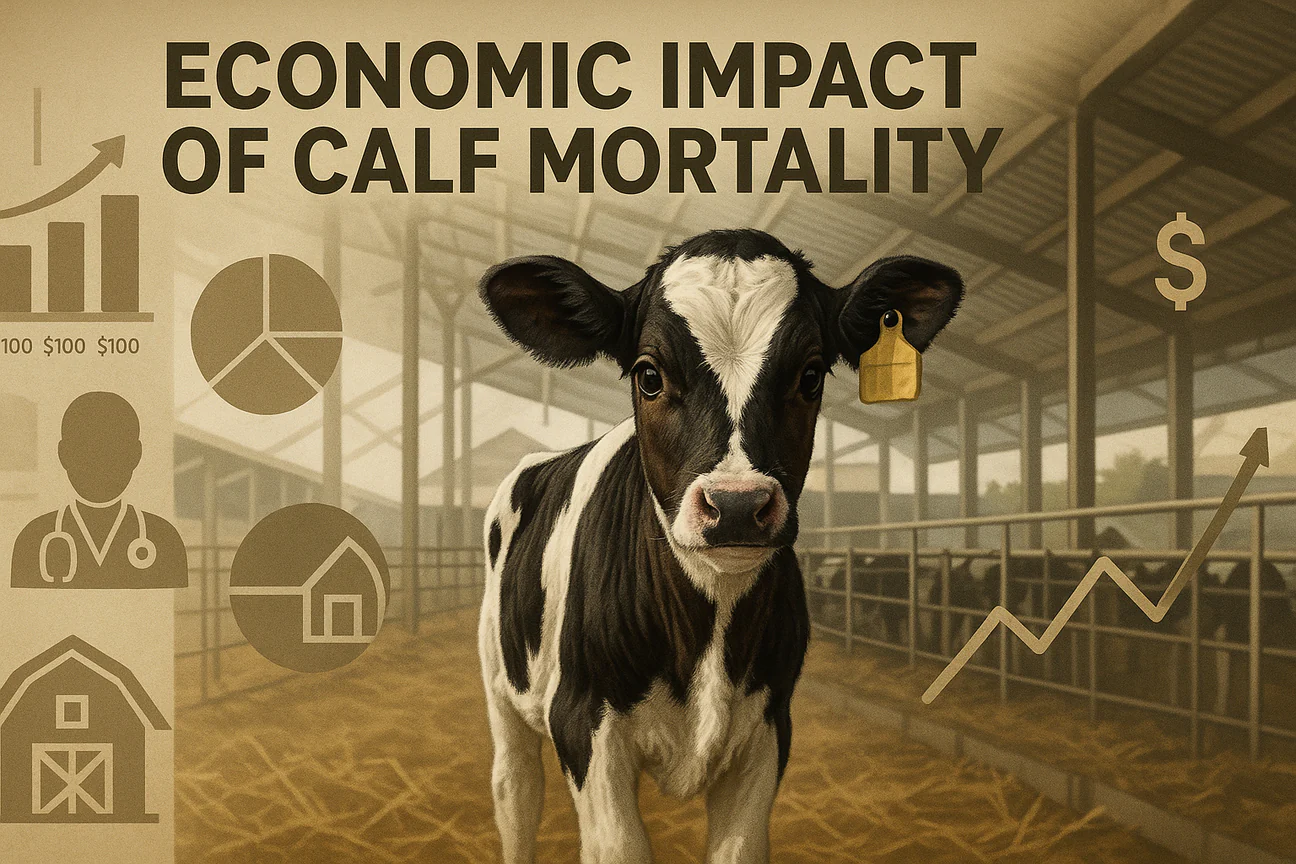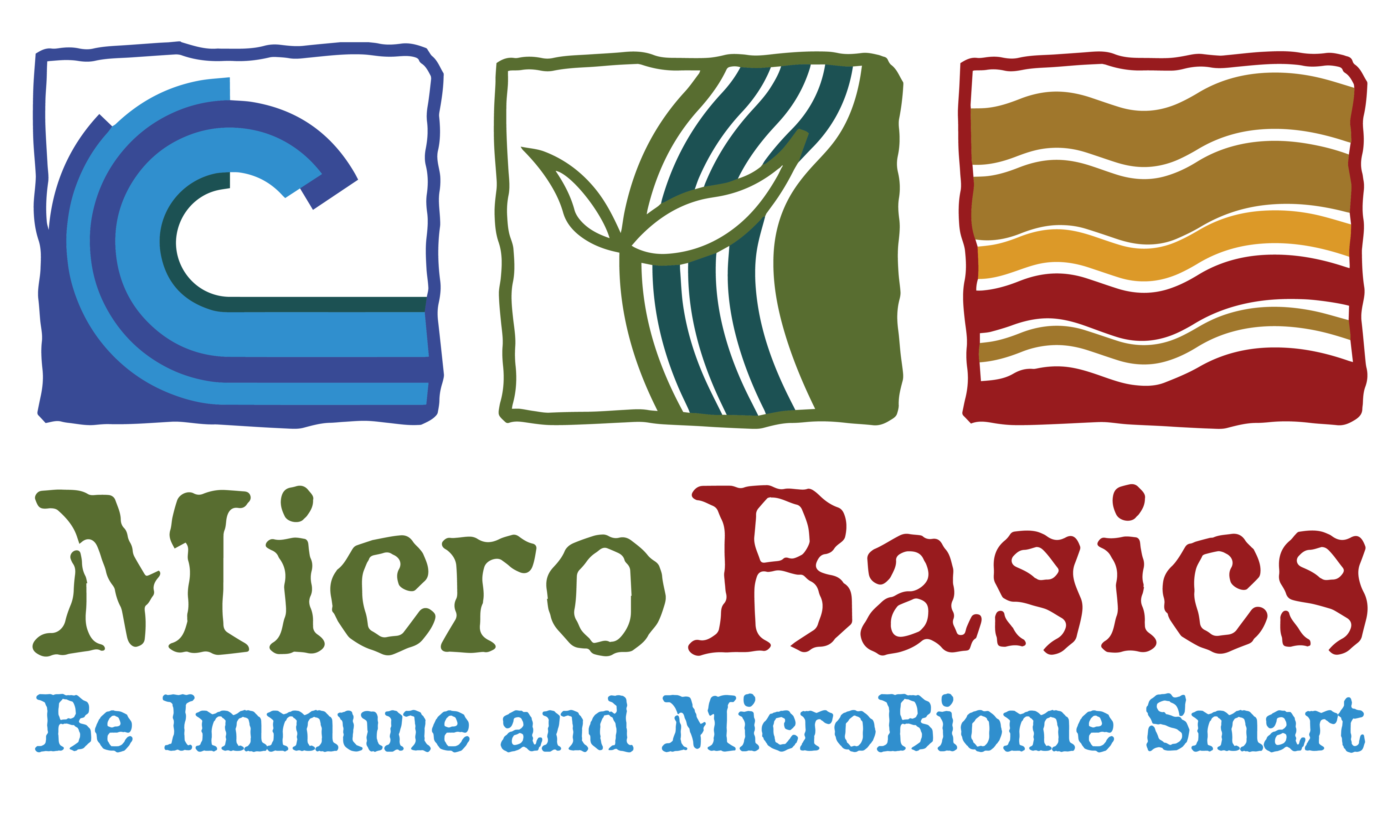
The Critical Economics of Calf Mortality: Why Every Life Counts More Than Ever
The industry is experiencing unprecedented calf values, making mortality prevention not just an animal welfare issue, but a critical economic imperative. With day-old calves now commanding prices that would have been unimaginable just a few years ago, every loss represents a significant financial hit that reverberates through the entire operation.
Current Calf Market Values: A New Reality
The calf market has reached historic highs in September 2025, with prices that underscore the tremendous value of these young animals. Current USDA market data reveals day-old calf values that reflect both strong demand and tight supplies:
- Calves age 0-14 days - Bulls (No. 1 quality): $964.03 per head
- Calves age 0-14 days - Bulls (No. 2 quality): $886.44 per head
- Calves age 0-14 days - Heifers (No. 1 quality): $930.28 per head
-
Calves age 0-14 days - Heifers (No. 2 quality): $643.88 per head
These values represent an average of $856.16 per newborn calf, making each animal a substantial asset from day one. The market strength reflects broader cattle industry dynamics, with cattle inventories at their smallest levels since 1951 and beef cow numbers continuing to decline.
The Hidden Cost of Mortality
Research consistently shows that dairy calf mortality rates typically range between 5-11% during the preweaning period. However, many operations experience mortality rates closer to 8.9%, with some studies documenting rates as high as 12% in certain years. These losses represent far more than just the initial calf value.
When a calf dies, producers face multiple economic impacts:
- Direct asset loss of the calf's market value
- Treatment and veterinary costs often invested before death
- Labor and management time spent on sick animals
- Disposal costs and facility cleanup
- Lost genetic potential and future productivity
Studies indicate that the total cost per dead calf can reach $395 when including all associated expenses. In some operations, additional costs for treatment, labor, and disposal add approximately $150 per death beyond the animal's value.
The Bottom Line Impact: A Real-World Example
Consider a typical dairy operation producing 1,000 calves annually. Using current market values and research-based mortality rates, the economic impact becomes starkly apparent:
Baseline Scenario (8.9% mortality rate):
- 89 calves lost annually
- Direct economic loss: $76,198
- Additional treatment/disposal costs: $13,350
-
Total annual loss: $89,548
Improved Scenario (5.5% mortality rate):
- 55 calves lost annually
- Direct economic loss: $47,089
- Additional treatment/disposal costs: $8,250
- Total annual loss: $55,339
Net Economic Benefit: $34,209 annually
This represents a return of $29.11 per calf in the operation, or $34.21 when including reduced treatment and disposal costs. For larger operations, these numbers scale proportionally, making mortality reduction one of the highest-return investments available.

Economic Impact of Reducing Calf Mortality from 8.9% to 5.5% (1,000 Calf Operation)
How Our Products Drive These Results
Sync Paste for Calves: The Critical First Hours
Sync Paste provides targeted support during the most vulnerable period of a calf's life. Administered after the first colostrum feeding, this nutritional supplement combats pathogens that can compromise calf health and survival. The formulation includes whole egg powder, lactic acid-producing bacteria, and MicroBasics' patented biological response modifiers that establish beneficial microbial populations in the newborn's microbiome.
Key Benefits:
- Supports immune system development
- Protects against digestive upsets
- Establishes healthy gut microbiome
- Provides broad-spectrum digestive protection
Surveillance Calf: Calf Health and Wellness Under Surveillance
Calf diarrhea and lung disease are the most common causes of death in young calves. Surveillance Calf represents a revolutionary approach to calf health management, combining nature's most powerful immune-supporting and gut health technologies. This liquid supplement is added daily to the milk/milk replacer to help protect calf health and wellness.
Key Components:
- Yeast Cell Wall: Documented ability to decrease intestinal pathogenic bacteria and prevent their colonization in the gastrointestinal tract
- Bacillus: Produces digestive enzymes and creates competitive exclusion against pathogenic bacteria
- Egg Antibodies: Highly potent supplement providing additional protection against bacterial burden and intestinal permeability
- Yucca schidigera: Soothes intestinal tissue, reduces inflammation, and improves nutrient absorption
- Plant Extracts: Provide antimicrobial, anti-inflammatory, and antioxidant actions
Yeast Culture: Stabilizes the intestinal microbiome for optimal intestinal integrity - Zinc Methionine: Helps support lung and hoof health
Real-World Results:
Producer testimonials consistently highlight Surveillance Calf's effectiveness against scours, the leading cause of calf mortality. One producer with over 40 years of calf-raising experience reported complete elimination of winter scour problems after implementing Surveillance Calf. Another noted that while previous groups consistently experienced "stress scours" 5-7 days after arrival, calves receiving Surveillance Calf showed minimal issues, with only 2 out of 18 affected and rapid recovery within one day.
TomaHawk iL Zn: Proven Performance Enhancement
Large-scale commercial trials have demonstrated TomaHawk iL Zn's significant impact on mortality reduction. In a study involving 1,439 grower dairy calves, the product achieved a 33% reduction in mortality risk. This comprehensive liquid formulation is added into the feed and includes yeast culture, yeast cell wall, Bacillus, yucca, plant extracts and zinc methionine to name a few.
Trial Results:
- 33% reduction in mortality risk
- 3.56% overall mortality reduction
- 15.4% reduction in initial respiratory disease treatment
-
Economic advantage of $5.34 per animal from arrival to shipment
The product works by supporting the gut, immune system development, improving digestion, and providing colonization resistance against pathogens. Clinical trials showed reduced treatment rates for both respiratory and gastrointestinal diseases.
The Integrated Approach: Maximizing Returns
The greatest impact comes from implementing these products as part of an integrated calf health program:
- Sync on Day 1 - Establish healthy gut microbiome and immune support immediately after colostrum
- Surveillance Calf in the Milk/Milk Replacer - Supports immune function and digestive health throughout the milk phase
- TomaHawk iL Zn in the Feed - Sustained immune and digestive support through critical development periods
This comprehensive approach addresses the primary causes of calf mortality: digestive diseases (32% of deaths), respiratory diseases (14.1% of deaths), and combined digestive/respiratory conditions (7% of deaths). Research shows that the majority of calf deaths occur within the first 50 days of life, with an average age of 17 days at death, making early intervention crucial.
The Changing Economics of Calf Care
With current calf values, the economic justification for comprehensive calf health programs has never been stronger. The industry's evolution toward higher calf values reflects broader market dynamics. Tight cattle supplies, strong demand, and genetic advancement continue driving calf values higher. In this environment, traditional approaches to calf mortality as "acceptable losses" become economically unsustainable.
Operations that embrace precision calf health management through products like Sync, Surveillance Calf, and TomaHawk iL Zn position themselves to capture these economic opportunities. The question isn't whether you can afford to implement comprehensive calf health programs—it's whether you can afford not to.
Every calf saved is a $770+ asset preserved, plus the avoided costs of treatment, labor, and disposal. In today's market, effective mortality prevention isn't just good animal husbandry—it's essential business strategy.
Resources:
- Cattle and beef market 2025 midyear review - Beef Magazine
https://www.beefmagazine.com/market-news/cattle-and-beef-market-2025-midyear-review - National Dairy Comprehensive Report - Monthly - USDA
https://www.ams.usda.gov/mnreports/lsmdairycomp.pdf - Dairy calf and replacement heifer mortality on a single intensively managed dairy farm
https://pmc.ncbi.nlm.nih.gov/articles/PMC9805776/ - Preweaning cost of bovine respiratory disease (BRD) - UC Davis
https://animalbiotech.ucdavis.edu/sites/g/files/dgvnsk501/files/inline-files/Dubrovsky2020.pdf - Morbidity and Mortality in Preweaned Heifers Dairy 2014 - USDA APHIS
https://www.aphis.usda.gov/sites/default/files/morb-mort-us-prewean-dairy-heifer-nahms-2014.pdf - Preventing Perinatal Beef Calf Mortality - Iowa State
https://dr.lib.iastate.edu/server/api/core/bitstreams/1c534018-286c-4810-8d35-54f0a1a98e8e/content - Why Do So Many Calves Die on Modern Dairy Farms and What Can We Do About It?
https://pmc.ncbi.nlm.nih.gov/articles/PMC4494359/ - An Evaluation of Feeding TomaHawk iL Zn - Calf and Heifer Association
https://calfandheifer.org/wp-content/uploads/2023/04/microbasicsadditionalresourcesYSA.pdf
